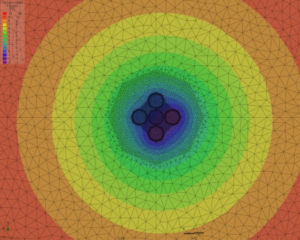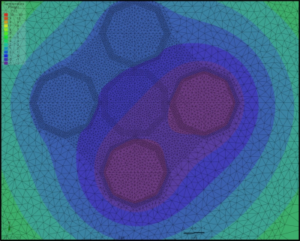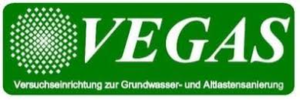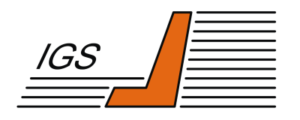Validate Frost
Detailed Evaluation of the “Minus 3 °C-Limit” for Borehole Heat Exchanger Systems (BHE) while Operation
Subject
- Geothermal energy
Task
- Research
- Knowledge transfer
Funding
- Public funding
Period
09/2018 – 08/2020 (2 years)
Budget
606,000 EUR
Description
Validate Frost evaluates the „minus 3 °C limit“ as a minimal inlet temperature for borehole heat exchanger systems (BHE) while operation to prevent freezing of the backfill material as well as in the underground as it is determined in the guideline for quality assurance of borehole heat exchanger systems “LQS EWS” of Baden- Württemberg.
Client
Federal state of Baden-Württemberg
Partner
- Steinbeis Research Institute Solites
- University Stuttgart – Institute of Geotechnical Engineering
- University Stuttgart – Institute for Modelling Hydraulic and Environmental Systems
Aim
The aim of the Validate Frost joint research project is to determine the minimum permissible inlet temperature of geothermal probes. This is done in particular under the premise of frost prevention in the surrounding formation and in the backfill material, as well as a sufficiently low system permeability in the backfill material and in the contact zones between backfill material and borehole wall or probe pipes. The results obtained in the large-scale test of the previous research project “Influence of the Operation of Heat Pumps on Potential Freezing of BHE – EWS-Frost” are going to be transferred to the real geological situation.
Implementation
When BHE are in operation, freeze-thaw cycles can lead to a damage in the annular space filling of the BHE and the surrounding formation. In Baden-Württemberg, the guideline “Qualitätssicherung Erdwärmesonden (LQS EWS)” regulates how to built BHE. In order to prevent potential frosting in the backfilling and formation, the minimum inlet temperature in the probes of the BHE is limited to minus 3 °C. This minimum temperature, determined on the basis of empirical values, was experimentally investigated in the research project “Influence of the Operation of Heat Pumps on Potential Freezing of BHE – EWS-Frost” in large-scale experiments considering the determinations in the guideline.
The results of the large-scale tests from the EWS-Frost research project show that using the “minus 3 °C” rule does not prevent the BHE from a freezing hazard in certain operation scenarios.
For a reliable evaluation of the “minus 3 °C” limit, further investigations of different geometric as well as material- and operation-related boundary conditions of a BHE are necessary. The interaction of various parameters such as inlet temperature, heat removal times, borehole geometry, grouting materials, surrounding formation, material of the probe tube, type of flow in the probe tubes, initial temperature of the formation etc. results in a large number of possible scenarios. An experimental investigation of all possible parameter combinations is neither economical nor feasible within an acceptable time frame.
Solites therefore creates a suitable simulation model and carries out the numerical determination of the minimum permissible BHE inlet temperature to prevent freezing. Critical operation scenarios are identified, which are investigated by the project partner VEGAS in medium scale frost experiments.
Results
- Creation and selection of a suitable simulation model for the thermal conditions in a BHE and the surrounding formation
- Identification of critical operation scenarios for the integrity of the BHE, if the minimum inlet temperature is -3 °C




Downloads and links
www.iws.uni-stuttgart.de/validatefrost
Contact
Yannick Reduth
reduth@solites.de
This project has received funding from

The sole responsibility for the content of this webpage lies with the authors. It does not necessarily reflect the opinion of the funding organization. Neither the funding organization nor the author are responsible for any use that may be made of the information contained therein.